AP Psych Unit 3, Mods. 3.7-3.9
1/75
There's no tags or description
Looks like no tags are added yet.
Name | Mastery | Learn | Test | Matching | Spaced |
|---|
No study sessions yet.
76 Terms
What is learning?
The process of acquiring new and relatively enduring information or behaviors through experience.
What are the three basic forms of learning?
Classical conditioning (associative learning), operant conditioning (associative learning), and observational learning (cognitive learning).
What is associative learning?
Learning that certain events occur together; we learn to associate something with something else.
What is classical conditioning?
Type of associative learning in which an organism learns to associate 2+ stimuli together, and as a result we are able to anticipate events (Ex: Lighting and thunder).
What are stimuli?
Any event or situation that evokes a response.
What is respondent behavior?
Behaviors that occur as an automatic response to some stimulus.
What is operant conditioning?
Learning to associate a response (our behavior) and its consequence.
What do associations produce?
Operant behaviors
What are operant behaviors?
Actions we consciously choose to perform and are influenced by the consequences they produce.
What is cognitive learning?
The acquisition of mental information, whether by observing events, by watching others, or through language.
What is the main difference between associative and cognitive learning?
Associative learning focuses on forming connections, while cognitive learning emphasizes the acquisition and use of knowledge.
What is observational learning?
Learning from others' experiences by observing and imitating what they do ("looking and learning").
What is considered an involuntary reflex behaviour?
Classical conditioning
Whose work on classical conditioning laid the foundation for behaviorism?
Ivan Pavlov
What is behaviorism?
The view that psychology should be an objective science that studies behavior without reference to mental processes.
What was the "Pavlov's Dogs" experiment?
Dogs naturally salivate when food is present, so, Pavlov paired the sound of the bell with the presentation of food. Dogs began to salivate at the sound of the bell even when no food was present.
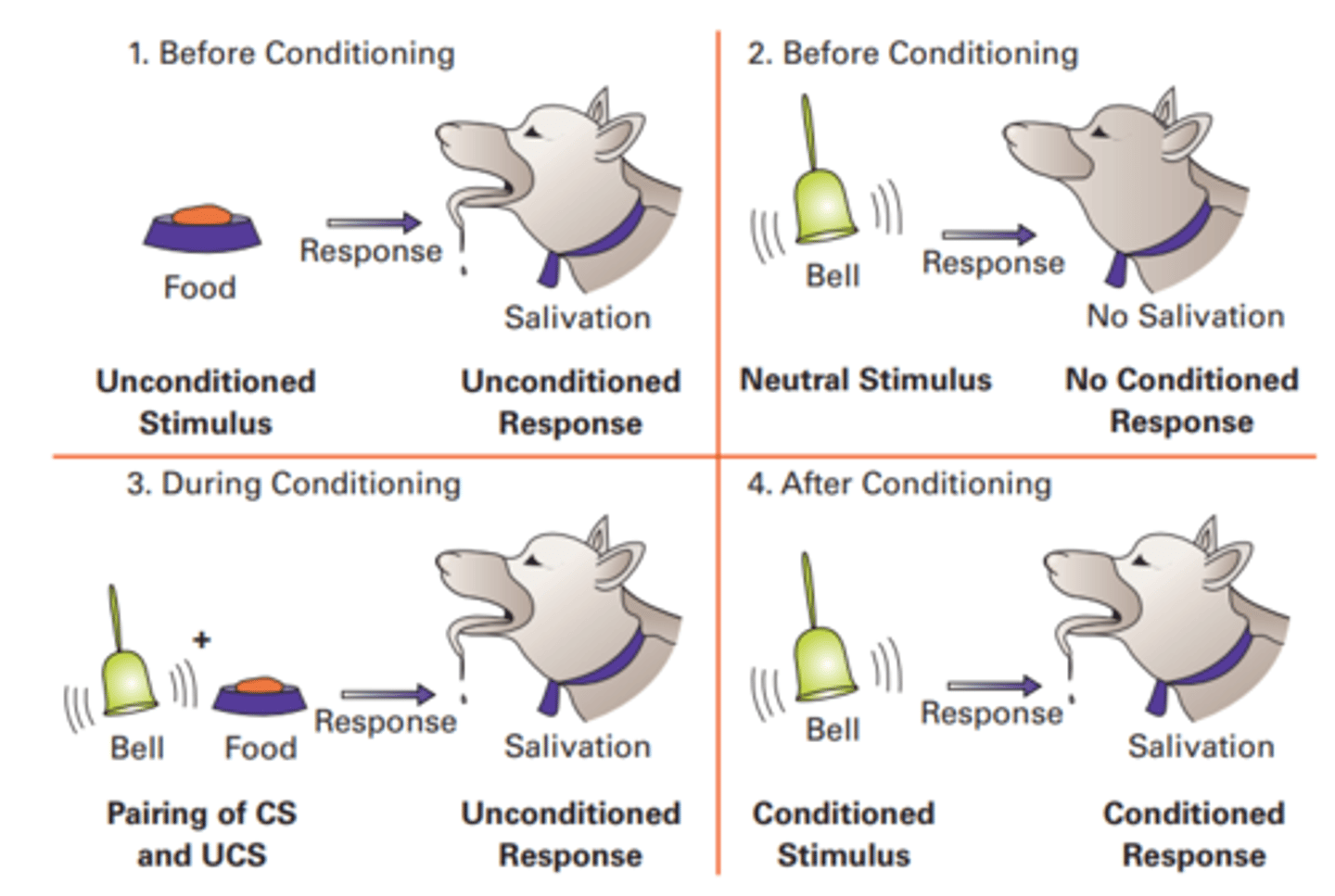
What is the "Pavlov's Dogs" experiment an example of?
Classical conditioning
What did the "Pavlov's Dogs" experiment showcase?
That classical conditioning can apply to organisms other than humans.
What is an NS (Neutral Stimulus)?
A stimulus that elicits no response on its own (Ex: bell in "Pavlov's Dogs" experiment).

What is an UCS (Unconditioned Stimulus)?
A stimulus that leads to a natural, automatic response (Ex: food in "Pavlov's Dogs" experiment).

What is an UCR (Unconditioned Response)?
A natural, automatic response to a stimulus (salivating "Pavlov's Dogs" experiment).
What is a CS (Conditioned Stimulus)?
A stimulus that can eventually trigger a conditioned response when associated with an UCS (Ex: bell in "Pavlov's Dogs" experiment).
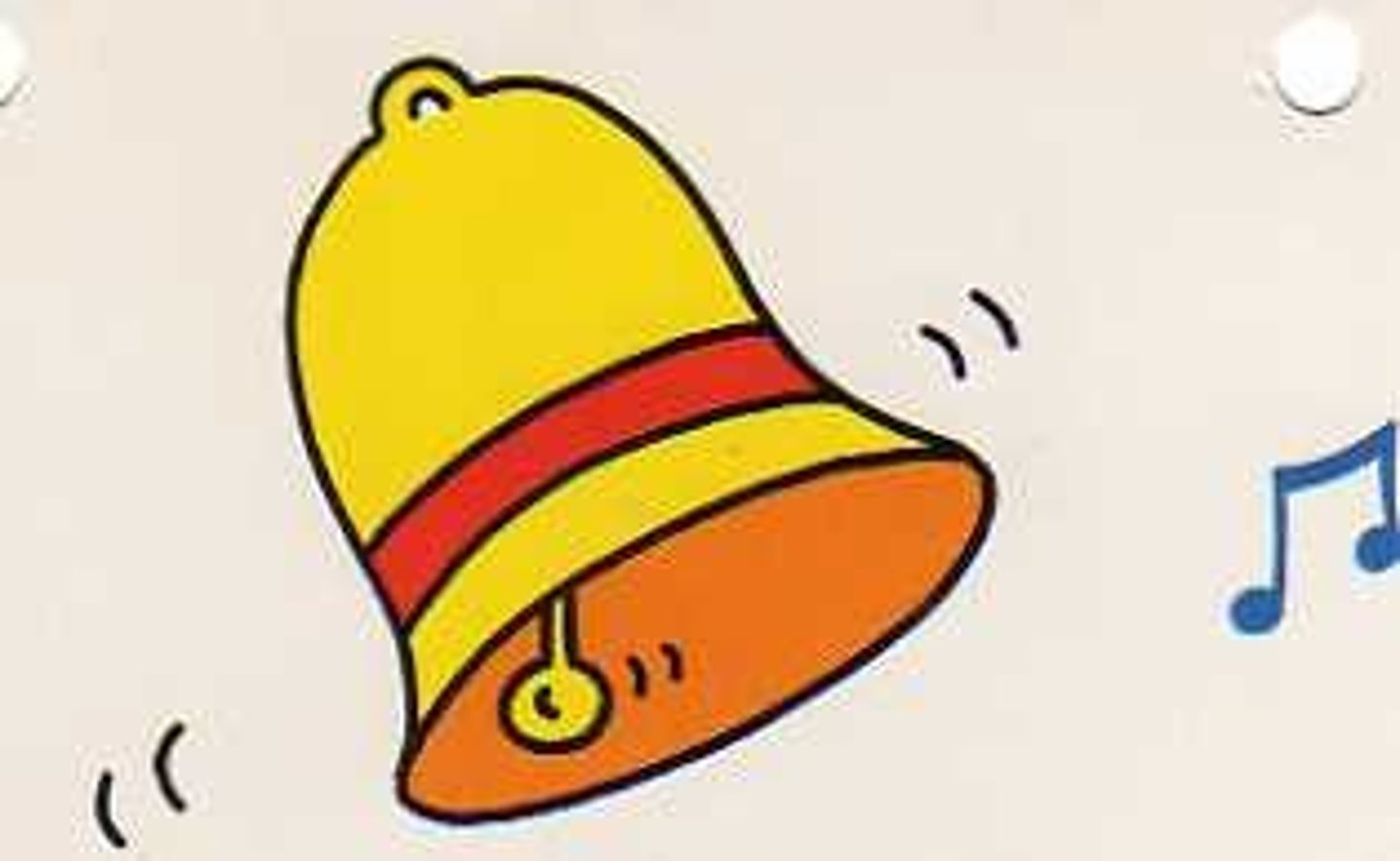
What is a CR (Conditioned Response)?
A natural, automatic response established by training an ordinary, neutral stimulus (Ex: salivating at the sound of a bell in "Pavlov's Dogs" experiment).
What does the NS (neutral stimulus) eventually become?
The CS (Conditioned Stimulus)
What is acquisition?
The initial stage of classical conditioning when the association between the NS and the CS is made, and the NS starts triggering the response (aka when learning is acquired!).
In what ways can conditioned and unconditioned responses manifest?
In physical responses (sweating, salivating, heart racing, etc.) and/or in emotional responses (sadness, happiness, love, etc.).
What is extinction?
When the conditioned response decreases or disappears (this happens when a conditioned stimulus is no longer paired with an unconditioned stimulus for a while and the association weakens).
What is spontaneous recovery?
The reappearance of the conditioned response after extinction took place (after a pause, the association reappears...shows us that the association was just weakened, but not gone!).
What is higher-order conditioning?
A procedure in which the conditioned stimulus in one conditioning experience is paired with another neutral stimulus, creating a 2nd (often weaker) conditioned stimulus.
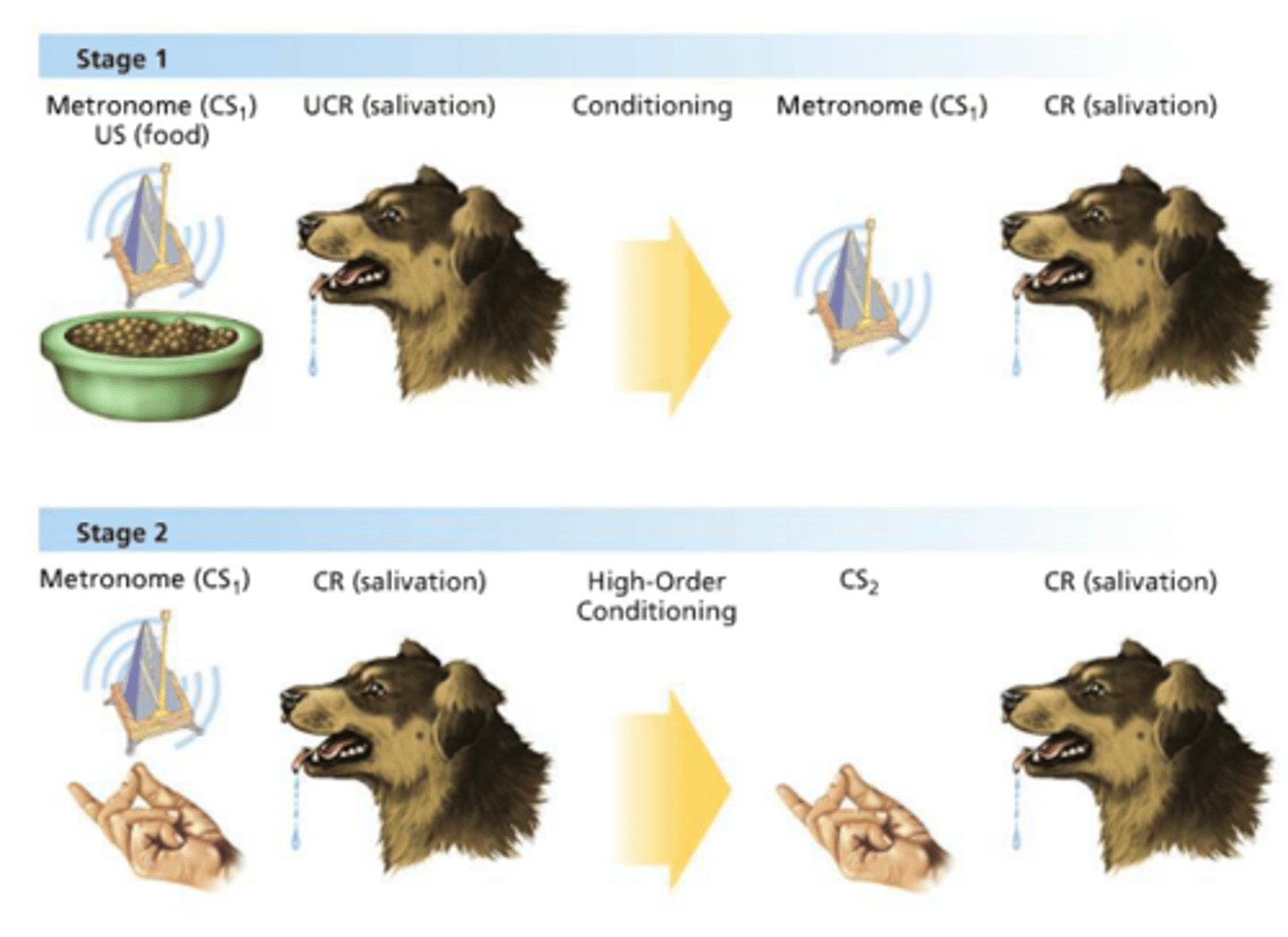
What is generalization?
The tendency, once a response has been conditioned, for stimuli similar to the conditioned stimulus to elicit similar responses.
What is discrimination?
The learned ability to distinguish between a conditioned stimulus and other stimuli that have not been associated with a conditioned stimulus.
What are the components of classical conditioning?
NS, UCS, UCR, CS, and CR
What are the processes of classical conditioning?
Acquisition, Extinction, Spontaneous Recovery, Higher Order Conditioning, Generalization, Discrimination.
What is Pavlov's legacy?
Pavlov taught us that significant psychological phenomena can be studied objectively, and that classical conditioning is a basic form of learning that applies to ALL species!
In what ways has Pavlov's discoveries influenced treatments and every day experiences?
1. Drug cravings and substance abuse: the brain has become conditioned to associate context with a drug's reward; breaking this association can reduce cravings.
2. Food cravings: the body learns to associate sweet tastes with pleasurable sensations; sugary foods can quickly condition cravings, yet healthier choices can be made by recognizing these conditioned cravings.
3. Immune Responses: Researchers found that when a particular taste accompanies a drug that influences immune responses, the taste by itself may come to produce an immune response too.
What is John B. Watson known for?
Being a behaviorist and for the "Little Albert" experiment.
What was the "Little Albert" experiment?
A study in which a white rat was paired with a loud sudden noise in order to condition a fear response in an infant.
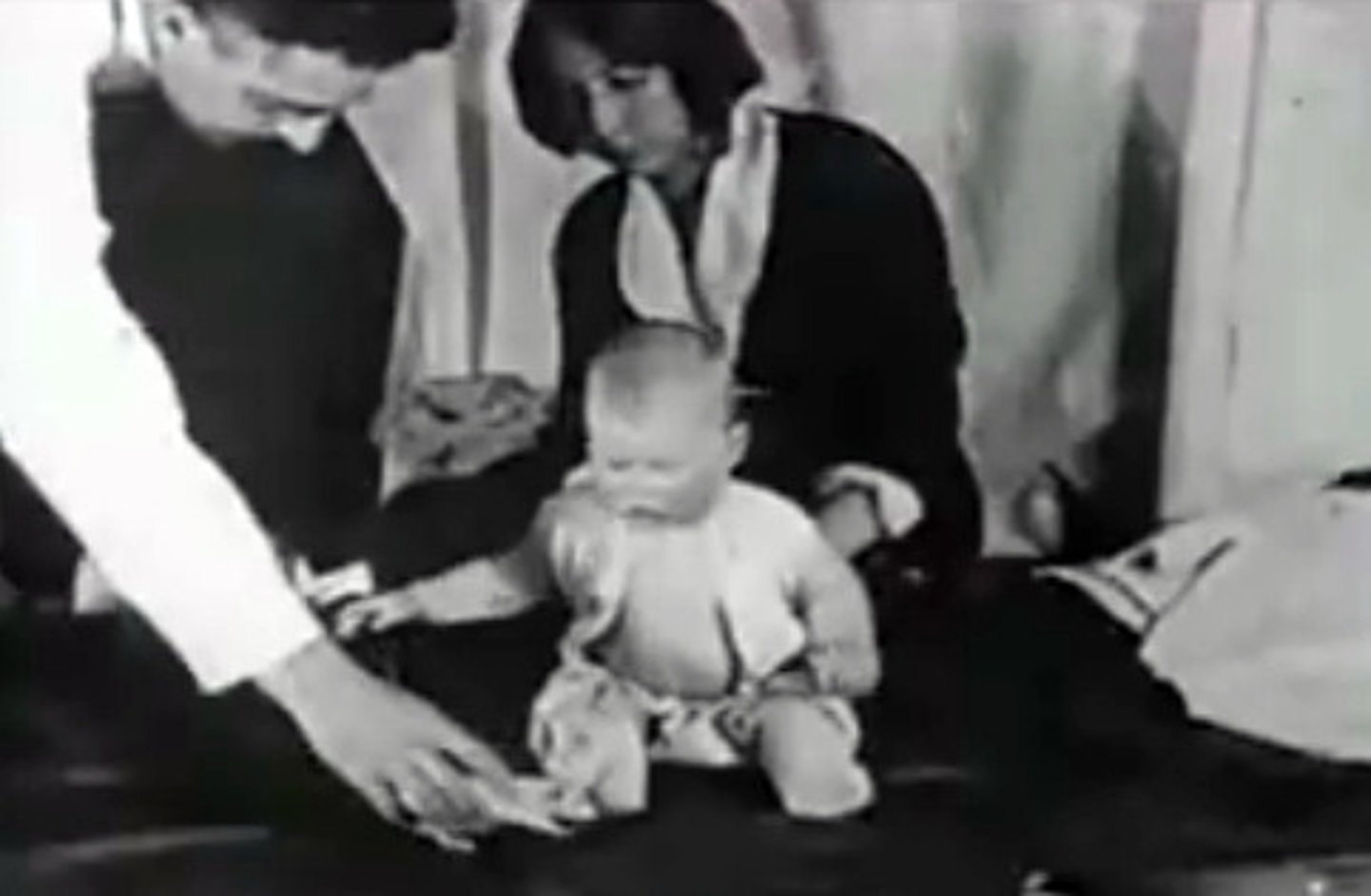
What did the "Little Albert" experiment show?
That is is possible to condition an emotional response in individuals.
What are the classical conditioning components of the "Little Albert" experiment?
NS: White rat
UCS: Loud Noise
UCR: Fear Response
CS: White Rat
CR: Fear Response
Who was Mary Cover Jones?
Founder of behavioral therapy, first to demonstrate that conditioning can reduce children's fear.
What is counter-conditioning?
A behavioral therapy technique that aims to replace an unwanted behavior or reaction with a desired one (does so by pairing an unwanted stimulus with a positive or neutral stimulus to create a new association).
What was the "Little Peter" experiment?
Little Peter had a fear of rabbits, but overtime, his fear diminished as the rabbit was paired with desired food, showcasing that fear can be reduced through positive association.
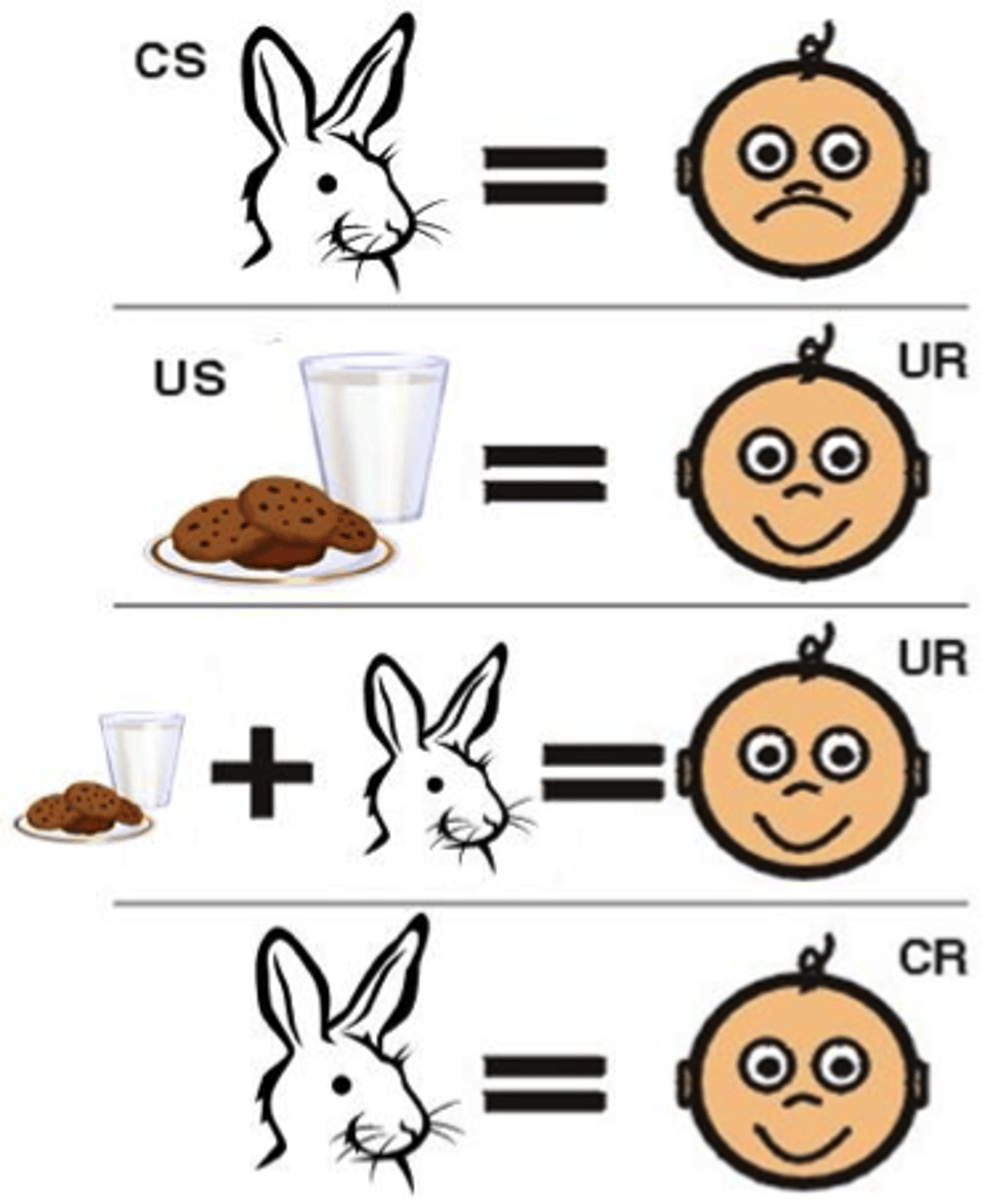
What is the flooding technique?
Experiencing your fear over and over again until the fear vanishes.
What do biological predispositions limit?
Which associations can be learned!
What is preparedness?
A biological predisposition to learn associations that have survival value (Ex: taste aversion).
What was the Taste Aversion Experiment?
While researching the effects of radiation on laboratory animals, John Garcia and Robert Koelling (1966) noticed that rats began to avoid drinking water from the plastic bottles that were placed inside the chambers where the rats were exposed to radiation. This led them to investigate whether the rats had developed an aversion to the water itself, rather than the bottles. To test their hunch, Garcia and Koelling exposed the rats to a particular taste, sight, or sound (CS) and later on also exposed them to radiation or drugs (UCS) that led to nausea (UCR).
What were the two major findings of the Taste Aversion Experiment?
1. Rats avoided certain tastes after getting sick, even if sickness occurred hours later (challenged idea that stimuli needed to be immediately paired for conditioning to occur).
2. Rats associated nausea with taste yet not with sights or sounds, showing a survival-based learning bias (challenges idea that any response could be conditioned to any stimulus).
What is one-trial conditoning?
One experience creates a strong learned association.
Who introduced operant conditioning?
B.F Skinner
What is the law of effect?
Behaviors with more favorable consequences become more likely, while those with negative consequences become less likely.
Who proposed the law of effect?
Edward Thorndike
What is behavior control?
Techniques and strategies used to influence and modify individual or group behavior.
What was the takeaway of Skinner's Pigeon Experiments?
These experiments demonstrated that behavior could be trained through operant conditioning.
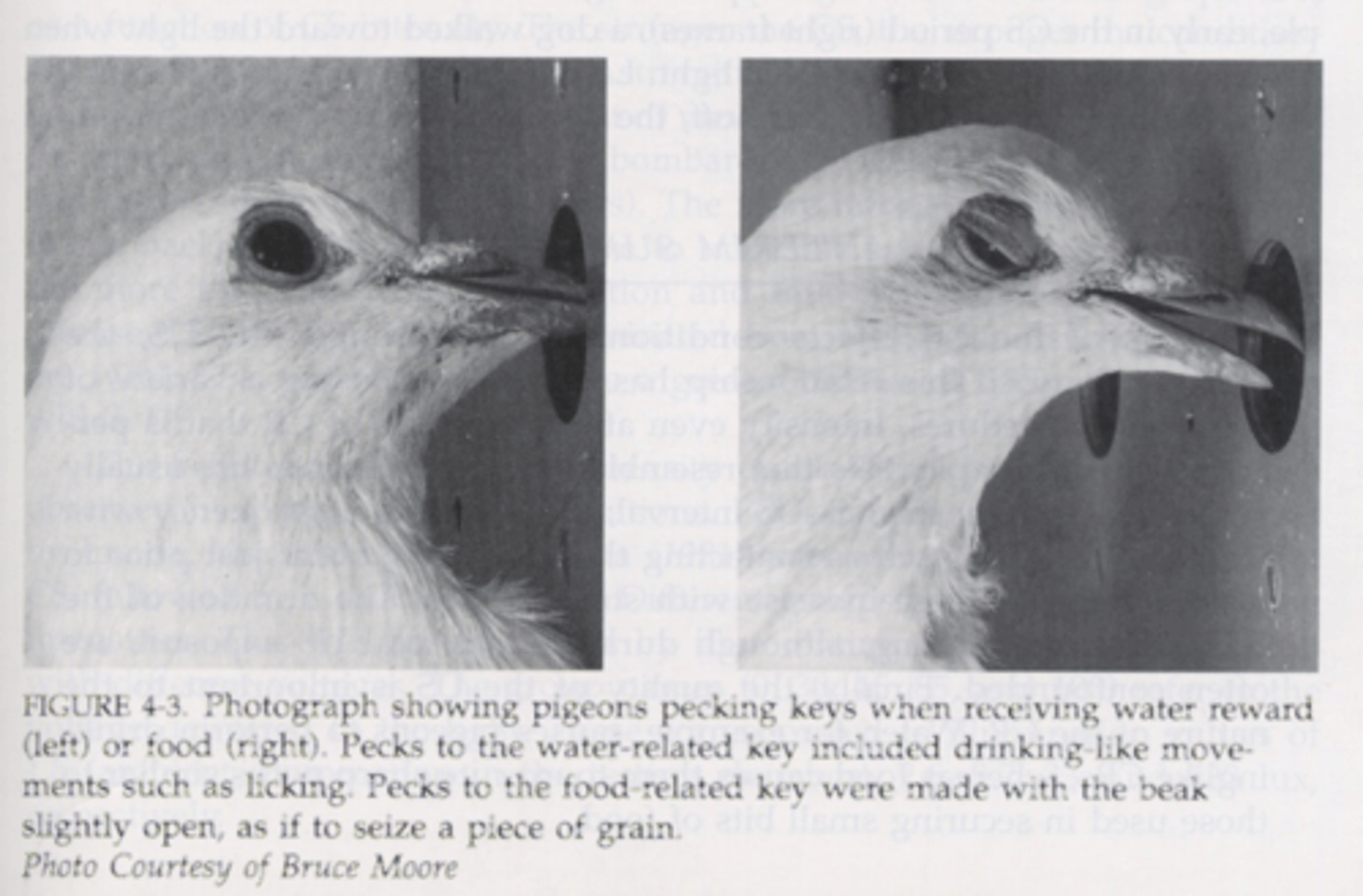
What is an operant chamber (aka Skinner box)?
Chamber that contains a bar or a key that an animal can manipulate to obtain a food or water reinforcer.
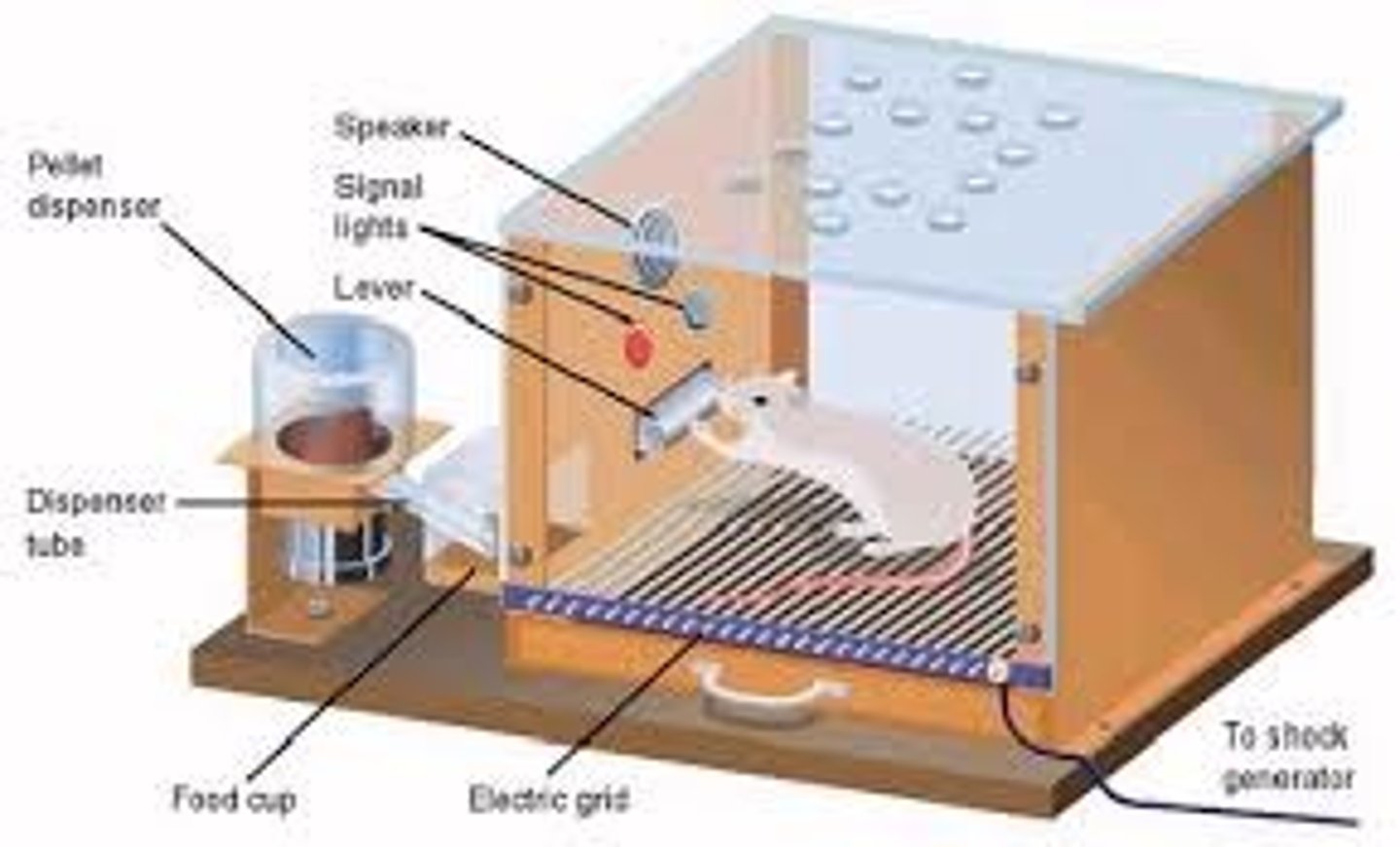
What is reinforcement?
Any event that strengthens the behavior it follows.
What is reinforcement especially useful for?
Shaping behavior
What is shaping?
An operant conditioning procedure in which reinforcers guide behavior closer and closer (successive) approximations of the desired behavior (i.e baby steps).
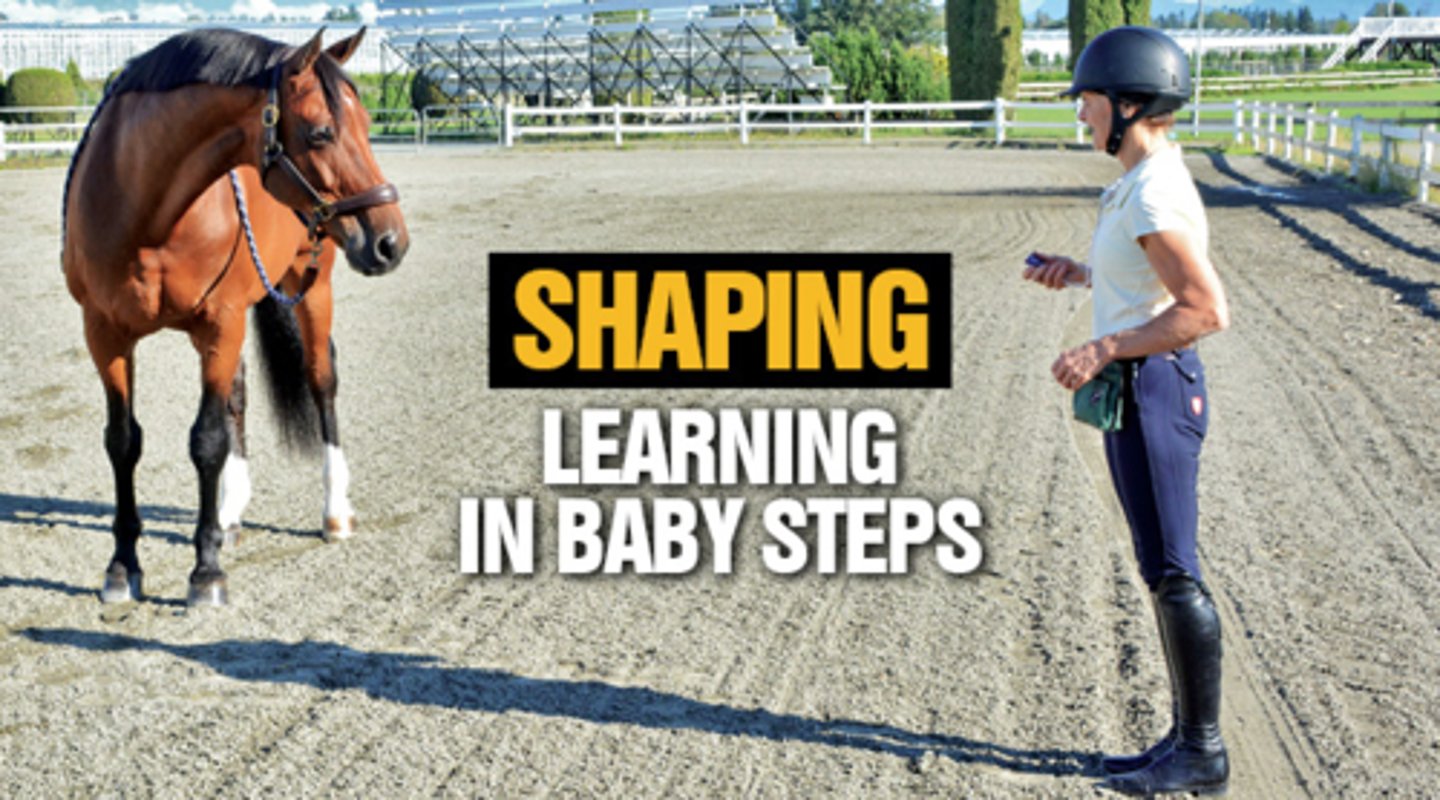
What are some examples of shaping in everyday life?
Gold star sticker charts, training for a 5k, potty training, obedience training for dogs, rat basketball

What is a discriminative stimulus?
A stimulus that elicits a response after association with reinforcement (ex: a kid getting a cookie as a reward) as opposed to other stimuli that is not associated with reinforcement and therefore won't elicit a response (ex: a kid getting a tax sheet as a reward).

What is positive reinforcement?
Positive consequences that increase the likelihood that a particular action or behavior will occur again.
What is positive reinforcement also referred to as?
Rewards
What are primary reinforcers?
A stimulus that is naturally/innately satisfying; subject does not have to learn these feel good/cause pleasure (ex: food, sleep, water).
What are secondary reinforcers?
Stimuli whose value is acquired (learned) through experience (ex: grades, cars, money).
What is negative reinforcement?
A response or behavior is strengthened by escaping or avoiding a negative outcome or stimulus (ex: taking medicine for a headache).
What does "escaping" refer to in regards to negative reinforcement?
Escaping what is already going on.
What does "avoiding" refer to in regards to negative reinforcement?
Avoiding a threat or annoyance before it occurs.
What are reinforcement schedules?
A pattern that defines how often a desired behavior will be reinforced.
What is continuous reinforcement?
Reinforcing every time the desired response occurs (ex: dog gets a treat every time it does a trick).
What is partial/intermittent reinforcement?
Reinforcing the desired response only part of the time.
What is a fixed-ratio schedule?
Reinforcement is given only after a specific number of responses (Ex: buy 10 coffees, get one for free).
What is a fixed-interval schedule?
Reinforcement is given only after a fixed interval of time (ex: bi-weekly paycheck).
What is a variable-ratio schedule?
Reinforcement is delivered after a seemingly unpredictable number of responses (ex: slot machines).
What is a variable-interval schedule?
Reinforcement is delivered after a seemingly unpredictable time interval.
What is punishment?
Refers to any negative consequence that occurs after a behavior that decreases the chance that the behavior will be repeated again.
What is positive punishment?
Adding unpleasant outcomes or consequences (ex: giving extra chores to a grounded teen).
What is negative punishment?
Taking something desirable away as a punishment (ex: taking away a teen's car when they are grounded).